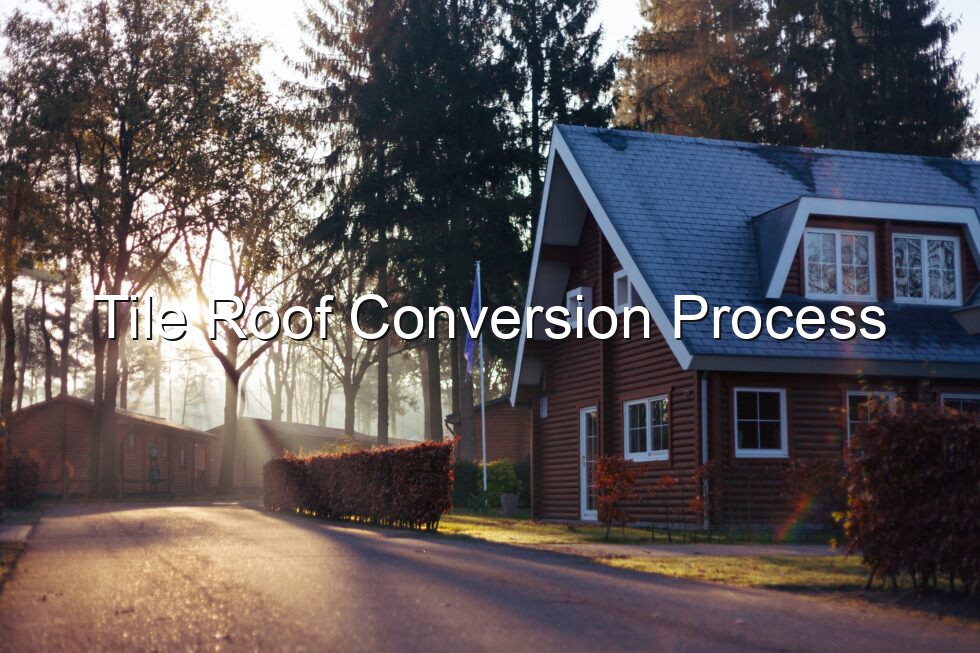Contact us today to ask about our FREE remote Google imaging and/or on-site roofing quotes.
Call us today!
(778) 809-7663
Contact us today to ask about our FREE remote Google imaging and/or on-site roofing quotes.
Call us today!
(778) 809-7663

The tile roof conversion process is a more complex procedure than the re-roofing procedure, having a few additional steps to ensure proper installation and the longevity of the roof. Recommended with aged tile roof installations that are due for replacement and are seeking alternative roofing options.
Before the work starts, all of the paperwork needs to be completed to protect both parties. This includes signing a contract, receiving the construction lien notices, finalizing the shingle selection for the homeowner’s home and setting up an estimated project start date.
Prior to the project starting, depending on the complexity of the roof, your roofing contractor may opt to have the materials “staged” and a mobile dump bin on your property a few days before the project starts. Ask for this date, if you’re unaware or if it is an inconvenience for whatever reason.
Table of Contents
Before any tear off starts, we protect your home and make our work area safe for the team; by protecting your soon to be exposed attic space, protecting landscaping and plants, installing safety boards if the roof is steep, installing guard rails and scaffolding, moving yard furniture, protecting siding from scratches and damage, etc.
Transport tools and prepare the new materials strategically.
Remove all of the old tile roofing, underlayment, battens and debris (any bird shielding), dispose of them in the dump bin; Removing any areas damaged by the batten removal and any areas with water damage too.
Check the plywood deck is in good shape; replacing any plywood that has mold, is soft due to water damage, nailing in any loose plywood, etc. Ensuring that the roof deck is acceptable for nailing new shingles, while avoiding existing damage to the roof from worsening and unsightly bumps in the roof appearing weeks later (usually 1-2 weeks after work is done).
Once the roof deck is in good shape, roof underlayment is installed with added water and ice shielding to roof valleys and penetrations to avoid excess moisture to run-off. Cover the roof with roofing felt, which acts as a barrier between the shingles and the roof deck so that the shingles don’t stick. Clean up any debris and material waste, dispose of in the dump bin.
Once the underlayment is ready, the starter shingles, regular shingles and at the end, ridge and hip cap shingles are installed. During this step, to prevent future water issues and air circulation issues, roof flashings and venting components are installed. This involves properly fitting and sealing any plumbing, air vents, valleys, adjacent walls, skylights, etc. Cleaning up any debris and materials and disposing of in the dump bin.
Complete one section of the roof at a time until the entire roof is finished. Allowing for the roof to remain fully protected from wetter weather from damaging the roof at any time.
Dispose of any remaining roofing materials and use a magnetic roller to capture any remaining nails, staples or metal debris are completely removed. Leaving your home and roof cleaner than when we arrived.
Converting a tile roof to another material offers cost-effectiveness, lighter weight for structural compatibility, reduced maintenance, climate-specific protection, aesthetic change, easier installation, enhanced energy efficiency, eco-friendliness, and improved architectural alignment.
This transition accommodates budget considerations, minimizes long-term upkeep, and aligns roofing with functional and visual needs. Consulting professionals ensures a well-informed decision tailored to individual preferences and practical requirements.
Converting a tile roof to another material involves significant cost considerations. Factors like the new roofing material's price, installation labor, and potential structural adjustments contribute to the overall expense. Additionally, removal and disposal of the existing tiles and the complexity of the conversion process impact costs.
While the initial investment may vary, evaluating long-term savings on maintenance and potential energy efficiency gains is essential. Consulting with experts helps gauge the financial implications and make an informed decision that aligns with both budget constraints and desired roofing outcomes.
Converting a tile roof to a different material has environmental implications. Some roofing materials, like clay or concrete tiles, are natural and recyclable, reducing waste. Transitioning to eco-friendly alternatives can minimize the carbon footprint, thanks to their sustainable sourcing and potential recyclability. However, the production and disposal of new materials should be considered.
Selecting environmentally conscious roofing options and recycling or repurposing old tiles can contribute to greener construction practices, aligning the conversion with eco-friendly goals and reducing the overall environmental impact.
The duration varies based on factors like roof size and complexity, but it usually takes a few weeks to complete.
Yes, many tile roofs are compatible with solar panel installation. Consult with a professional to ensure a seamless integration.
Tile roofs perform well in various climates; however, certain tiles may be more suitable for specific weather conditions.
While tile roofs are durable, it's best to avoid unnecessary foot traffic to prevent potential damage. Consult your roofing expert for guidance.
Yes, many roofing companies offer financing plans to make the conversion process more affordable.